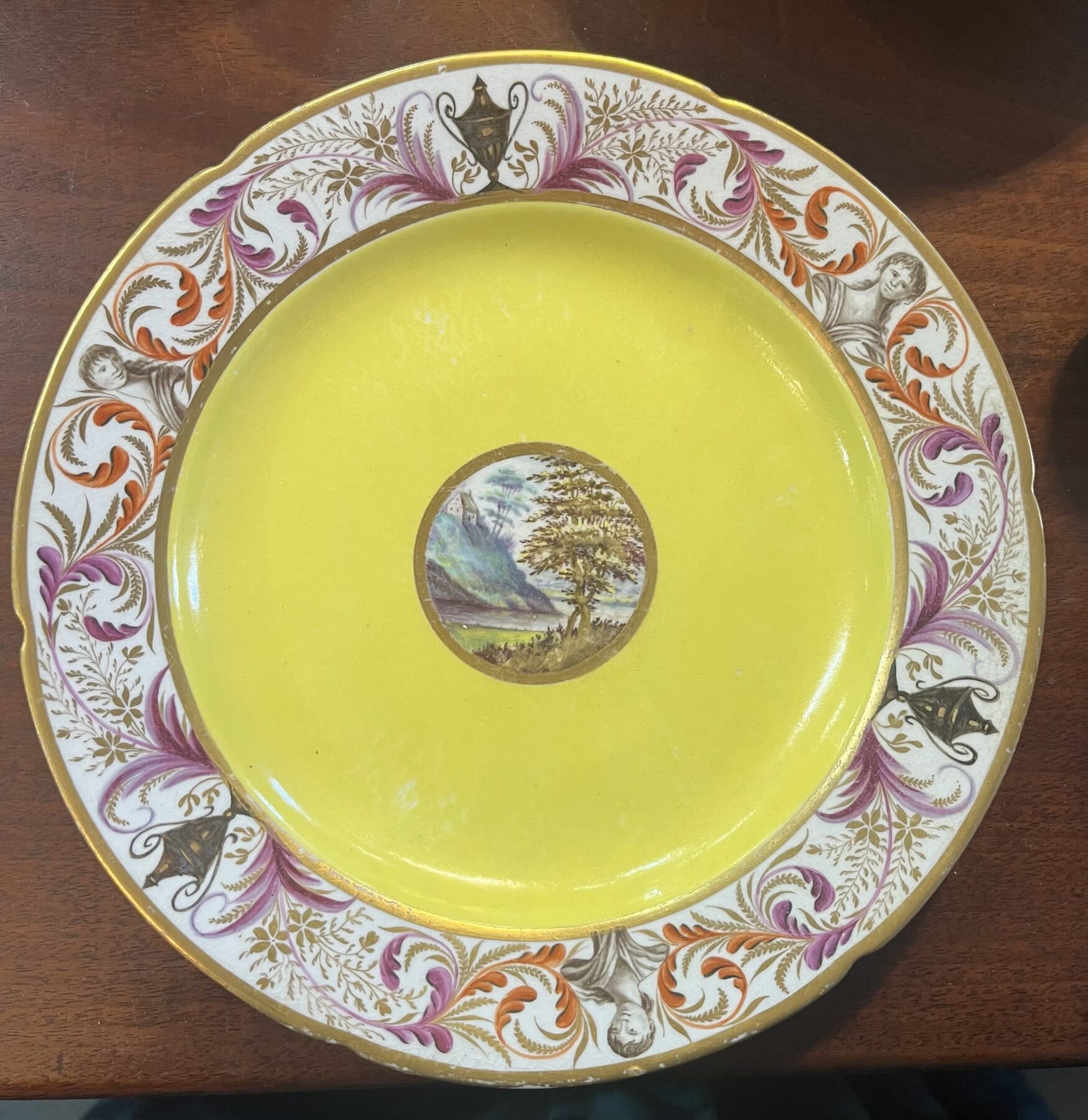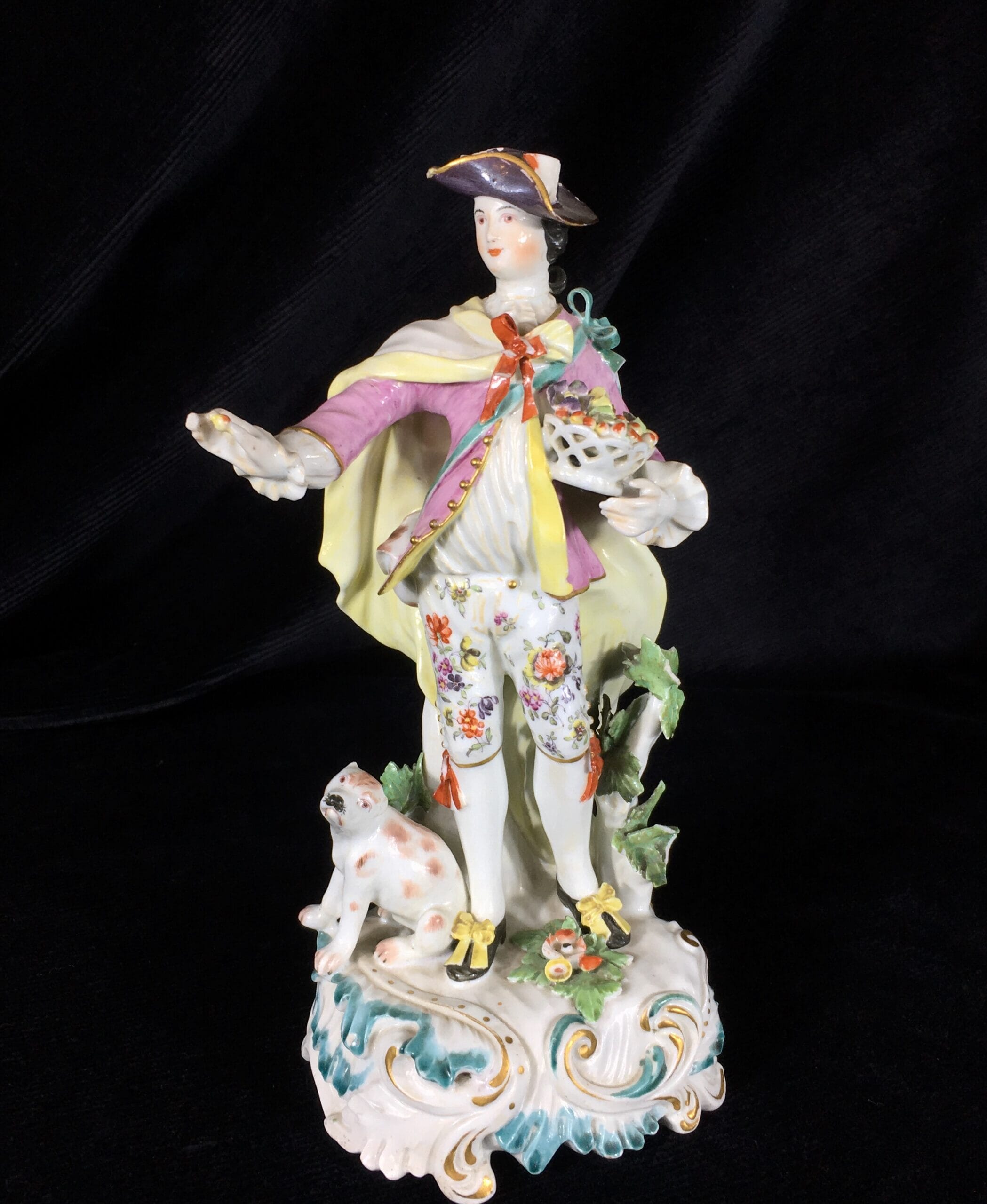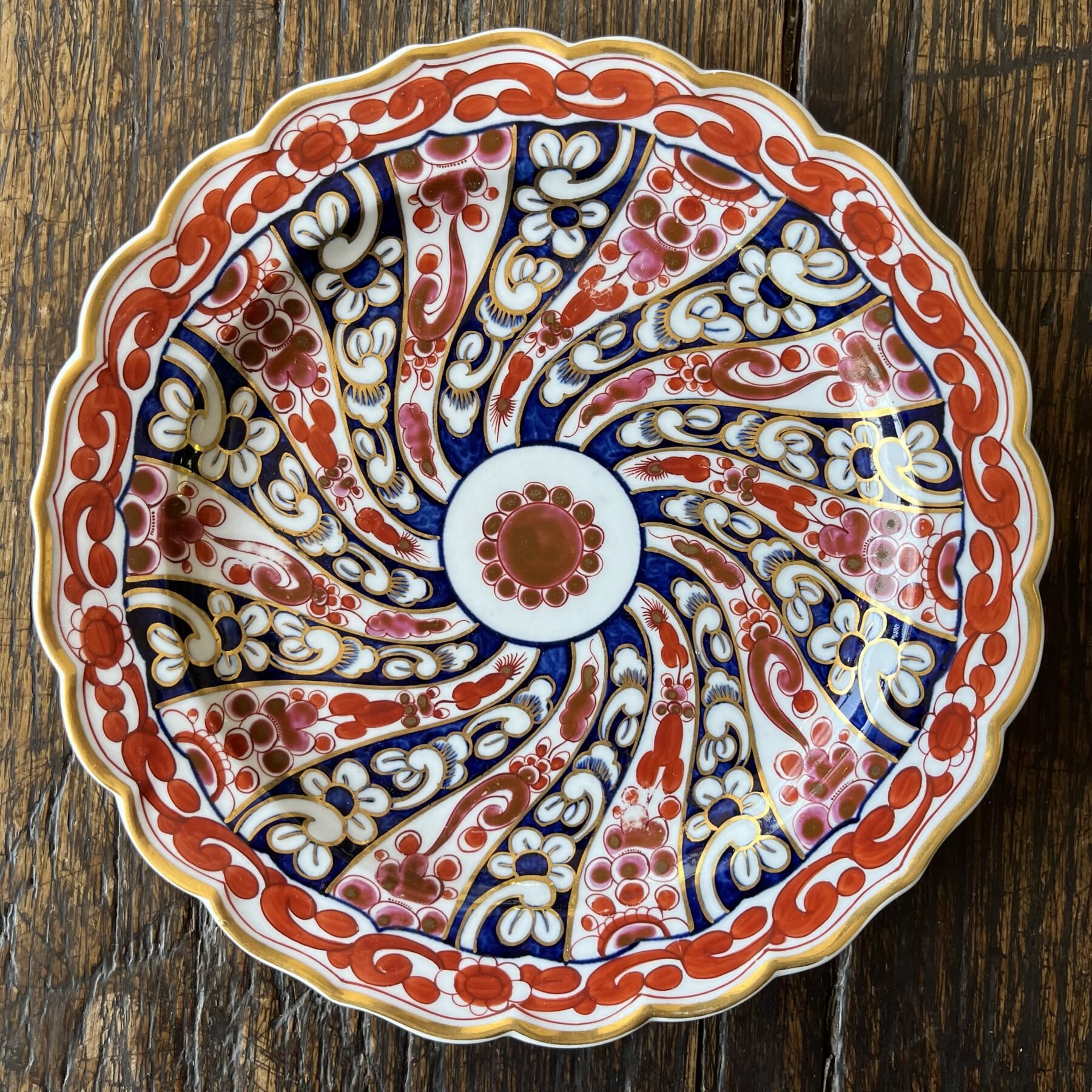Herculanium? oval footed dish, Greek ‘Attack of the Griffin’ pattern in blue, c.1815
Sold
Interesting Pearlware footed serving dish, of compressed oval form, the flared foot with moulded rim, the high walls with angular shoulder & flat rim with moulded edge enameled in brown, printed in blue with a ‘Greek’ pattern including charriots, a griffin, and classical figures, around a central reserve of fruiting vine, the edges with five roundels of classical figures on an intense ground of Greek Key, Anthemion, and geometric squared border.
Impressed ’16’ within an oval, maker unknown, Liverpool or Staffordshire
Circa 1815
26×16.5cm, 8cm high
Condition: chip to rim & chip to foot, otherwise excellent condition
Unknown maker, possibly Herculanium (Liverpool). This pattern is also known as ‘Etruscan’, and the source is a late 18th or early 19th century print in “The Complete Collection of Antiquities from the cabinet of Sir William Hamilton” , illustrated by Pierre François Hugues (called d’Hancarville), who copied one of Hamilton’s ancient Greek vase paintings from the 5th century BC, the scene known as ‘The attack of the Griffin’.
ref. Transfer Collector’s database #10731 for a discussion on the pattern, perhaps Liverpool (Herculanium), but probably a Staffordshire maker. The print is ideitical, and examples all have the brown enamel rim seen on this piece.
The print on this unusual footed oval dish is adapted from a large oval or round form, more suitable for a meat plate or punch bowl; it has been sliced & overlapped to conform to this shape. The central panel with palmettes and fruiting vine is a custom- print with no signs of alteration, therefore made solely for this compressed oval form.
The ’16’ mark to this piece is interesting. In other pearlware pieces, these numbers correspond to the size of a platter, ie 16 inches. Numerous other numbers however have no relation to size, and must be a production tally of some sort; not all pieces in a service have a number mark.
The shape is rare, being an oval version of a round form known as a ‘cake stand’. the moulding to the foot and flat rim with rounded edge are distinct and not seen on most perlware examples from this period; no other example found.
| Condition | |
|---|---|
| Size | |
| References |
Sold - let us find you another










